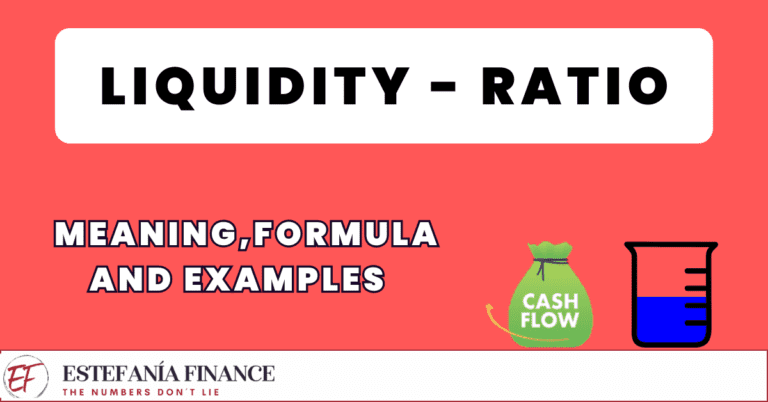ROI, or return on investment, is a key metric for evaluating the return on an investment.
The Return on Investment, or ROI, helps us understand the profitability we have achieved for every euro invested in a project or investment.
This allows us to make informed decisions about where to invest our resources to maximize profitability.
1. WHAT IS ROI
stands for Return on Investment, an indicator that measures the profitability of any project or investment.
We can say that ROI or return on investment allows you to measure the performance of an investment in relation to how much you had to invest. Moreover, it is an essential indicator when choosing among several projects and determining which one will be more profitable.
ROI tells us how much we have obtained, whether it be a gain or a loss, in relation to how much we had to invest.
whether it’s for analyzing a marketing campaign, acquiring new technology, or any other type of investment. Knowing what ROI is essential to measure what investment will be more beneficial, otherwise, we might end up choosing the more costly option.
For example, if we invest 100 euros in a Facebook campaign and another 100 euros in a Google campaign, ROI marketing allows us to determine which of the two has been more profitable.
With ROI, we obtain the profitability of an investment.
2. HOW TO CALCULATE ROI?
To calculate ROI or return on investment, we only need the profits generated over a stipulated time and the amount of capital invested.
By profits, we refer to the income generated by the investment minus the amount of the initial investment.
ROI FORMULA:
ROI = (return obtained – investment) / investment x 100

A high ROI indicates that the gains obtained from an investment significantly exceed the initial capital invested.
3. ROI MEANING:
A HIGH ROI is ideal as it suggests that the investment has not only been profitable but has also produced significant added value in relation to the initial investment.
? If the ROI is < 100%: it tells us the time needed to recover your original investment
For example, if you achieve an annual ROI of 50%, it means that each year you are recovering half of what you initially invested. In this case, you would need two years to see your initial investment again, and any income after that would be considered as net gain.
? If the ROI is > 100%: it shows that you not only recover your initial investment from the first year but also obtain additional profits. For example, an annual ROI of 150% suggests that you not only recover the entirety of your initial investment in the year but also earn an extra 50%.
4. How to Use ROI – Practical Examples.
4.1 ROI ON STOCK INVESTMENT
Option a) imagine you invest €1,000 in Facebook shares and, after one year, you sell that share for €1,100. Your profit is €100. The ROI calculation in this case would show a return of 10%.
• Initial Investment: €1,000
• Value after 1 year: €1,100
• Profit: €1100-€1000 = €100
• ROI= (€100 / €1000) = 10%
These kinds of concrete examples help us understand the real impact of ROI on our investments.
Option b) imagine you invest €5,000 in Apple shares and, after one year, you sell that share for €6,000. Your profit is €1,000. The ROI calculation in this case would show a return of 20%.
• Initial Investment: €5,000
• Value after 1 year: €6,000
• Profit: €6000-€5000 = €1,000
• ROI= (€1,000 / €5,000) = 20%
4.2 ROI ON REAL ESTATE
Option 1: buying a house
• Purchase cost: €200,000
• Total annual rent: €24,000
• Maintenance and other costs: €4,000
• Net annual profit: €20,000
• ROI: (20,000/200,000) x 100 = 10% annually
Option 2: buying a commercial property.
• Purchase costs: €200,000
• Total annual rent: €30,000
• Maintenance and other costs: €6,000
• Net annual profit: €24,000
• ROI: (24,000/200,000) x 100 = 12%
Comparison: The commercial property offers a higher ROI, which might make it more attractive without considering other factors such as demand, risk of non-payment…
4.3 MARKETING ROI
For instance, we have invested in different marketing strategies: Content creation, SEM Campaign, SEO Campaign, and a community manager.
We want to know which of the 4 strategies has given us more benefits.

Using the ROI formula:
• Content: (€300-€500) /€500 = – 40%
• SEM campaign = {(€1200-€1000) /€1000)} =20%
• SEO campaign = {(€800-€600) /600} = 33.33%
• Community Manager = {(€800-€300)/€300} = 166%
If we use the ROI formula, we can see that the most profitable investment was in hiring a community manager where we obtained a 166%.
This not only covers the initial cost of the investment but also provides a substantial gain that reflects the effectiveness of the campaign.
5. WHY IS ROI IMPORTANT?
Using ROI in your financial decisions allows you to:
Analyze investments: Using ROI lets you compare the profitability of different investment options. Remember to consider factors such as the term and risk associated with each investment.
Save time and money: If an investment offers you a high net return, you can focus on investing more time and resources in similar opportunities and leave those investments that do not provide adequate returns.
Make more informed decisions about which assets to invest in.
Setting goals: Define what you consider a “good” ROI for your investments, considering your risk appetite and financial goals.
Periodically evaluate your investments: review the ROI of your investments periodically to assess their performance. If an investment is not generating the expected returns, it might be time to consider selling it or adjusting the strategy.




